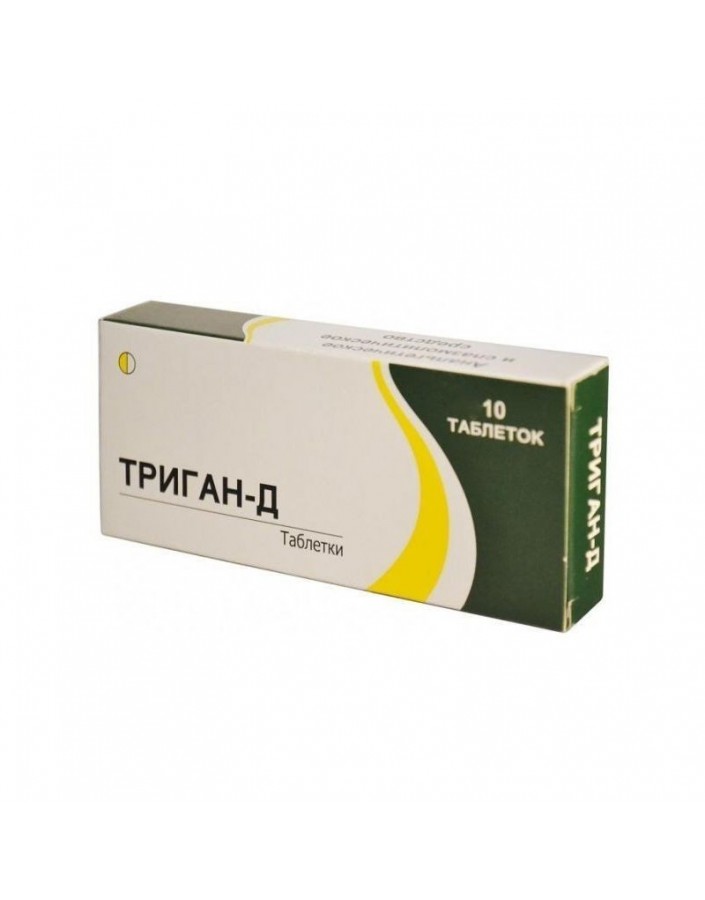




Security policy (edit with Customer reassurance module)

Delivery policy (edit with Customer reassurance module)

Return policy (edit with Customer reassurance module)
Dicyclomine hydrochloride, Paracetamol
10 pieces
TRIGAN-D has anticholinergic activity and directly relaxes smooth muscles, relieves pain.
Dicyclomine hydrochloride is a tertiary amine with antimuscarinic, antispasmodic and muscular-relaxing properties. Dicyclomine is very effective in gastrointestinal spasm, especially with that associated with irritable bowel syndrome.
Paracetamol is a nonsteroidal anti-inflammatory drug and both act synergistically with parcetamol to accelerate the pain relief process.
- spasm of smooth muscles of internal organs;
- intestinal, hepatic and renal colic;
- Algomenorrhea;
- headache, toothache, migraine pain;
- neuralgia;
- myalgia;
- infectious and inflammatory diseases accompanied by fever.
- hypersensitivity to paracetamol and dicycloverin;
- obstructive bowel disease;
- peptic ulcer and 12 duodenal ulcer (acute phase);
- reflux esophagitis;
- hypovolemic shock;
- myasthenia gravis;
- pregnancy;
- lactation period;
- children's age (up to 15 years).
Contraindicated
It is applied orally to adults and children over 15 years old on 1 pill 2-3. The maximum single dose for adults is 2 tablets, daily 4 tablets. The duration of treatment without consultation with a doctor is not more than 5 days when prescribed as an anesthetic and 3 days as an antipyretic. With prolonged use of the drug is necessary to control the picture of peripheral blood and the functional state of the liver.
From the gastrointestinal tract: dry mouth, loss of taste, loss of appetite, epigastric pain, constipation, increased liver enzymes, usually without developing jaundice, hepatonecrosis (dose-dependent effect).
Allergic reactions: skin rash, pruritus, urticaria, Quincke edema, exudative erythema multiforme (including Stevens-Johnson syndrome), toxic epidermal necrolysis (Lyell's syndrome).
CNS sideways (usually develops when taking high doses): drowsiness, dizziness, psychomotor agitation and disorientation.
On the part of the endocrine system: hypoglycemia, up to hypoglycemic coma.
From the side of blood-forming organs: anemia, methemoglobinemia (cyanosis, shortness of breath, pain in the heart), hemolytic anemia (especially for patients with gluco-6-phosphate dehydrogenase deficiency).
From the genitourinary system: pyuria, urinary retention, interstitial nephritis, papillary necrosis.
From the organs of vision: mydriasis, blurred vision, accommodation paralysis, increased out-of-eye distance.
The effect is enhanced by amantadine, antipsychotic agents, benzodiazepines, MAO inhibitors, narcotic analgesics, nitrates and nitrites, sympathomimetics, tricyclic antidepressants, cholinolytics, corticosteroids; reduce - antacids.
Enhances the effects of Digoxin.
In dry, the dark place at a temperature of no higher than 25 ° C
